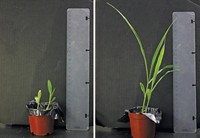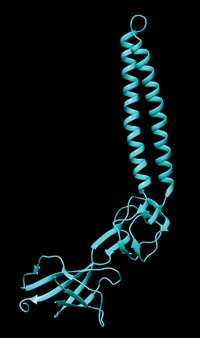Advertisement
Grab your lab coat. Let's get started
Welcome!
Welcome!
Create an account below to get 6 C&EN articles per month, receive newsletters and more - all free.
It seems this is your first time logging in online. Please enter the following information to continue.
As an ACS member you automatically get access to this site. All we need is few more details to create your reading experience.
Not you? Sign in with a different account.
Not you? Sign in with a different account.
ERROR 1
ERROR 1
ERROR 2
ERROR 2
ERROR 2
ERROR 2
ERROR 2
Password and Confirm password must match.
If you have an ACS member number, please enter it here so we can link this account to your membership. (optional)
ERROR 2
ACS values your privacy. By submitting your information, you are gaining access to C&EN and subscribing to our weekly newsletter. We use the information you provide to make your reading experience better, and we will never sell your data to third party members.
Environment
Antimicrobial Silver Nanoparticles Can Strengthen Bacterial Defenses
Nanotoxicity: Low nanoparticle doses can spur bacterial biofilm growth
by Matt Davenport
July 22, 2015

Humanity has exploited the antimicrobial properties of silver for centuries, but researchers and regulators have recently raised concerns that silver nanoparticles released into the environment could harm ecosystems and the wild microorganisms within them.
Research now suggests a new way that nanosilver could change microbial ecology. When nanoparticles fail to kill bacteria, the silver structures may instead boost the microbes’ resilience by triggering them to protect themselves within biofilms (Environ. Sci. Technol. Lett. 2015, DOI: 10.1021/acs.estlett.5b00159).
Pedro J. J. Alvarez and Yu Yang of Rice University uncovered this counterintuitive result after observing how bacteria responded to nonlethal concentrations of silver nanoparticles—concentrations lower than those used in most other studies. The team compared this microbial response with that of bacteria exposed to the same concentration of silver from dissolved silver nitrate.
The duo discovered that low-level nanoparticle exposures prompted communities of bacteria from a wastewater treatment plant and pure cultures of Pseudomonas aeruginosa to grow protective biofilms—layers of bacteria embedded in a matrix of sugars and proteins produced by the microbes. Biofilms improve bacteria’s ability to cope with a range of stressors, such as dwindling food resources or antimicrobials, apparently including silver nanoparticles, Alvarez says.
Using fluorescence microscopy, the researchers saw that after nanoparticle exposure, bacteria built biofilms that covered between about two to five times the area of those produced by bacteria exposed to silver nitrate. Inorganic species such as chloride and phosphate present in the environment can easily intercept the free silver ions from the nitrate salt before they reach bacteria, Alvarez says, whereas the silver is better protected within the polymer-coated nanoparticles.
“This research is exciting because it helps fill in three knowledge gaps on the effects of nanoparticle pollution on microbes in a single elegant study,” says Benjamin P. Colman, a microbial ecologist at Duke University. Those gaps include how silver nanoparticles affect mixed-strain samples, how silver particles act on bacteria in biofilms, and how low concentrations of particles influence bacterial behavior. “From both an environmental and a human health perspective, these are all incredibly important points,” Colman says.
The Rice researchers also investigated the gene expression differences between P. aeruginosa exposed to nonlethal doses of silver nanoparticles and of silver ions. Among the differences Alvarez and Yang observed was the fact that the nanoparticle-exposed bacteria had higher expression levels of efflux pump proteins, which allow bacterial cells to spit out antibiotics and heavy toxic metals, such as silver, Alvarez says.
Duke’s Colman points out that biofilm formation would be unlikely in certain critical situations: Nanoparticle-infused bandages, for instance, rely on high enough concentrations of silver that bacteria would not survive. Still, when it comes to using silver nanoparticles, “it’s a reminder there are potential unintended consequences,” Alvarez says.





Join the conversation
Contact the reporter
Submit a Letter to the Editor for publication
Engage with us on Twitter